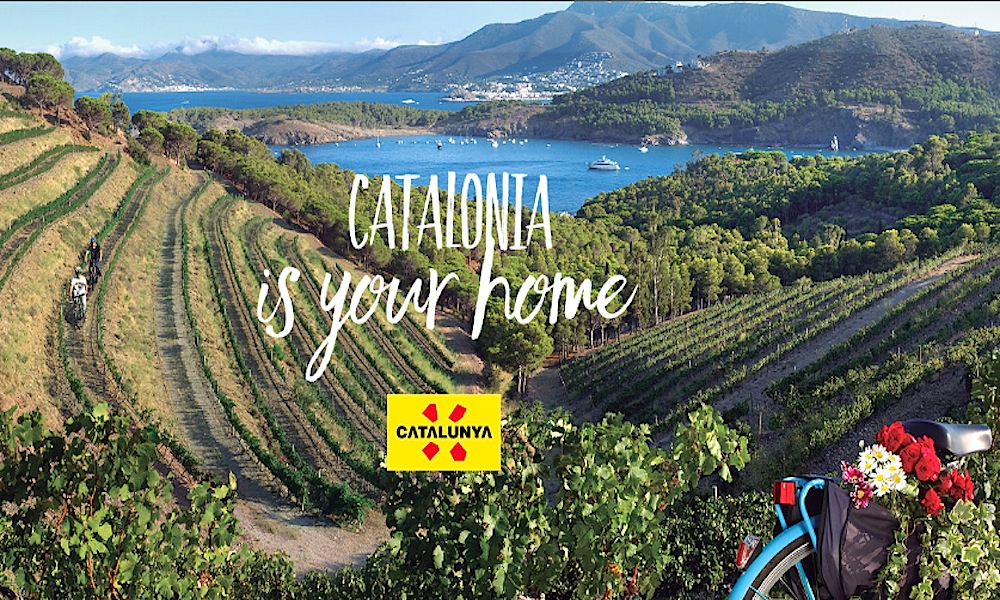
In January 2018, the Catalan Tourist Board will present the Year of Culture for 2018. Throughout the year, visitors will be able to explore the region’s wealth of cultural attractions, spectacular landscapes and unique gastronomy scene.
With nine UNESCO World Heritage Sites, Catalonia is world-renowned for its cultural festivals and traditions steeped in history and age old tradition. The rich millenary history has left a legacy waiting to be discovered ranging from thousand-year-old cave paintings and Greek and Roman artefacts, to Medieval and Romanesque monasteries and iconic pieces of modernist architecture.
Furthermore, with its own distinctive cultures, language, and affluent gastronomic scene, Catalonia is a prime destination for visitors to explore the areas that inspired Catalonia’s geniuses.
World-Renowned Heritage
Explore an Ancient Europe UNESCO route in Tarragona. The city of Tarragona will feature in UNESCO’s new Ancient Europe tourist route. In addition, eight other European cities will be included that demonstrate the cultural heritage of the continent and will be linked to the year of European Cultural Heritage in 2018.
Tarragona itself is known for its spectacular Roman ruins, including its Amphitheatre and aqueduct, and hosts the Festival of Roman History every May, offering visitors the opportunity to enjoy the city’s ancient monuments in an interactive way: https://we.tl/ze62jzslIC
2018 Highlights Antoni Gaudí in Barcelona
A wander around Catalonia’s vibrant capital reveals its famous Gothic façades alongside Antoni Gaudí’s most famous creations: Parc Güell, La Pedrera, Casa Batlló and Casa Vicens – Gaudi’s first major construction that will open to the public as a museum for the first time on 16th November 2017.
Casa Vicens was the artist’s first residential construction, built as a summer home between 1883 and 1885 and was the starting point of Gaudí’s career. As a further celebration of the opening, the Gaudí World Congress will be held at the University of Barcelona for three days in October 2018. The conference gathers international experts, young innovators and entrepreneurs and to share knowledge and get inspired from Gaudí’s life and work: www.casavicens.org / www.gaudicongress.com
New Route Launches
The Romanesque Centre of Vall de Boí has recently announced the ‘Romanesque art and architecture and Falles’ route. This new route combines fire feasts called Falles of the Pyrenees, and the Romanesque-style churches of Vall de Boí: two unique Catalan traditions within this UNESCO World Heritage Site.
Throughout summer, travellers can discover the legacy of the valley’s medieval past set against the backdrop of spectacular scenery on these trips. The Alta Ribagorça District Council has also signposted the ‘Paths of Fire’ routes for self-guided tours. These 10 routes start at the beacon where the Falles are lit and continue down into the mountainside: www.vallboi.cat/en
Unique Catalan Traditions
Marvel at Catalan human towers. The city of Valls has established a brand new ‘Castellers’ museum dedicated to the Catalan human towers, a Catalan tradition classified as a UNESCO Masterpiece of Oral and Intangible Heritage of Humanity.
This museum will explore the details surrounding these impressive human feats, and will be the only one of its kind in the world. The longstanding Catalan tradition of building human towers, or castells, originated near the city of Tarragona. Traditionally, the castellers take place as part of traditional festivals, as well as in performances throughout the castellers season (June – November). In 2018, the biannual International Castellers contest comes back to Catalonia, offering visitors an incredible show where the different ‘colles’ compete to build the highest and most complex human tower.
Eat Like a Local
Catalan culture relies heavily on its fresh produce and market culture. The markets are not only for distributing food, but are also a place for communities to meet and bid for the finest food.
On the Barcelona coastline, from Mondays to Fridays at 8am and 4pm, auctions are held in Arenys de Mar and also at the Vilanova i la Geltrú. On the Costa Brava, Palamós opens its auction on working days from 4.30pm to 7.30pm; Roses and Llançà on Fridays at 5pm. In Terres de l’Ebre, l’Ametlla de Mar, which specialises in red tuna, and Sant Carles de la Ràpita have auctions at 4pm:
Take Part in a Calçotada in Valls
This popular gastronomic festival fills the streets and squares of Valls every January with Calçots, colours and sounds. Calçotada is a Catalan tradition that consists of meeting friends and family to eat Calçots (a type of spring onion), which are grilled on the barbecue, dipped in Romesco sauce and eaten wearing a bib to avoid staining your clothes!
The day includes a varied programme of traditional festive events, parades, calçot-related competitions, calçot-grilling demonstrations, a calçotada market and calçot-growing, sauce-making and eating competitions, plus a tasting. Originally from Valls, these are eaten all around Catalonia, usually outdoors and during the wintertime.
For information on events and festivals in Catalonia, visit: https://experience.catalunya.com/en




